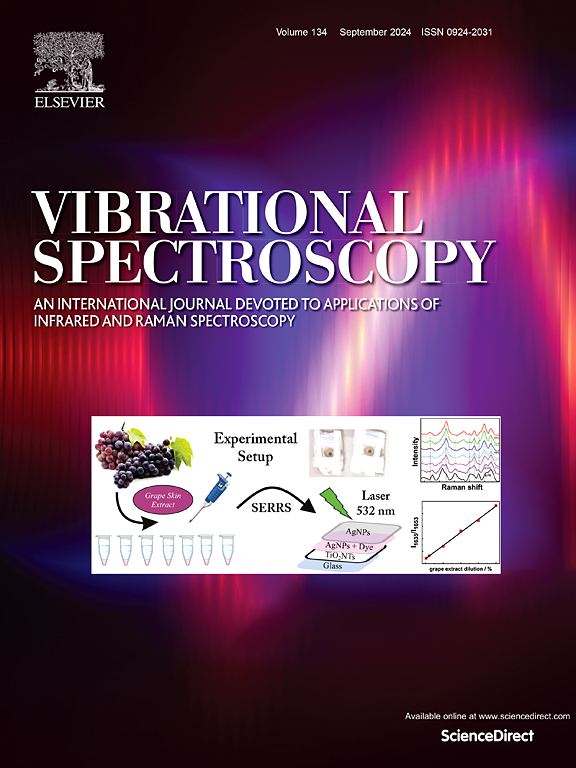Accuracy of DFT quadrature grids for the computation of quantum anharmonic vibrational spectroscopy
IF 3.1
3区 化学
Q2 CHEMISTRY, ANALYTICAL
引用次数: 0
Abstract
This study evaluates the accuracy and convergence of 12 DFT quadrature grid combinations for computing potential energy surfaces (PESs) to address quantum anharmonic vibrational spectra. The grids, ranging from 23 to 300 radial and 170 to 1202 angular points, are tested with widely used six DFT functionals (B3LYP-D, PBE0-D, B3PW91-D, B98-D, ωB97X-D, M06–2X) using def2-type triple-ξ basis sets. The computed anharmonic transitions for fundamentals and overtones along with the intensities are benchmarked using vibrational self-consistent field (VSCF) and its second-order perturbative corrected (VSCF-PT2) algorithms across different molecules, against the reference/largest grid (300,1202). While the smallest grid (23,170) had significant deviations, the largest grid is accurate but computationally expensive. Moderate grids like 75,302 achieved excellent accuracy with lower CPU demands, making them ideal for large molecules, while 75,590 is preferred for flexible systems. Furthermore, the angular grid has a greater impact on the accuracy of computed spectra than the radial grid.
量子非谐波振动谱计算中DFT正交网格的精度
本研究评估了12种DFT正交网格组合计算势能面(PESs)的精度和收敛性,以解决量子非谐波振动谱问题。采用def2型三重-ξ基集,用广泛使用的6种DFT泛函(b3lypd、PBE0-D、B3PW91-D、B98-D、ωB97X-D、M06-2X)对23 ~ 300径向点和170 ~ 1202角点的网格进行了测试。利用振动自洽场(VSCF)及其二阶微扰校正(VSCF- pt2)算法,针对参考/最大网格(300,1202),对不同分子计算出的基音和泛音的非调和跃迁以及强度进行基准测试。虽然最小的网格(23,170)有明显的偏差,但最大的网格是准确的,但计算成本很高。像75,302这样的中等网格以较低的CPU需求实现了出色的精度,使其成为大分子的理想选择,而75,590则适合灵活的系统。此外,角网格比径向网格对光谱计算精度的影响更大。
本文章由计算机程序翻译,如有差异,请以英文原文为准。
求助全文
约1分钟内获得全文
求助全文
来源期刊

Vibrational Spectroscopy
化学-分析化学
CiteScore
4.70
自引率
4.00%
发文量
103
审稿时长
52 days
期刊介绍:
Vibrational Spectroscopy provides a vehicle for the publication of original research that focuses on vibrational spectroscopy. This covers infrared, near-infrared and Raman spectroscopies and publishes papers dealing with developments in applications, theory, techniques and instrumentation.
The topics covered by the journal include:
Sampling techniques,
Vibrational spectroscopy coupled with separation techniques,
Instrumentation (Fourier transform, conventional and laser based),
Data manipulation,
Spectra-structure correlation and group frequencies.
The application areas covered include:
Analytical chemistry,
Bio-organic and bio-inorganic chemistry,
Organic chemistry,
Inorganic chemistry,
Catalysis,
Environmental science,
Industrial chemistry,
Materials science,
Physical chemistry,
Polymer science,
Process control,
Specialized problem solving.
 求助内容:
求助内容: 应助结果提醒方式:
应助结果提醒方式:


